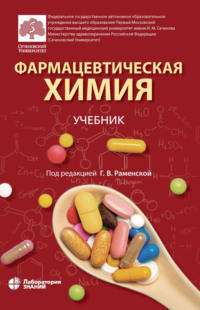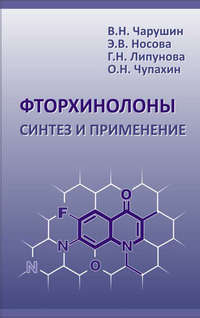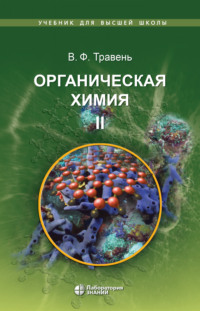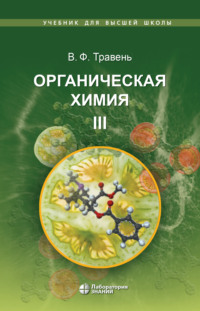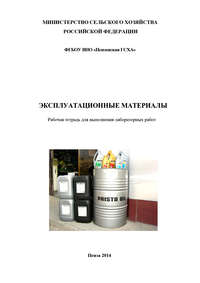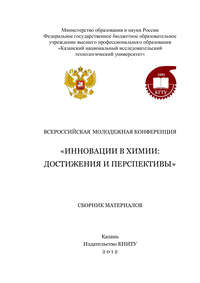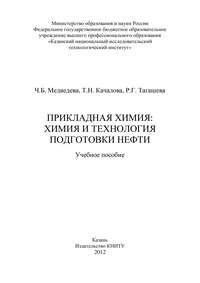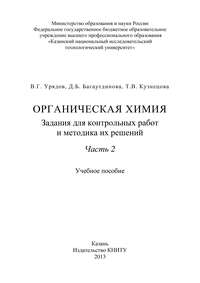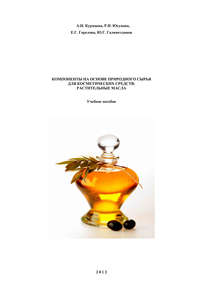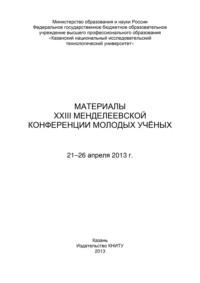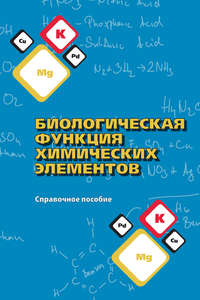Книги жанра органическая химия
Предлагаемый учебник «Фармацевтическая химия» относится к новому поколению учебной литературы. Содержание книги отражает самые последние изменения, связанные с появлением новых лекарственных средств и внедрением в практику современных методов фармацевтического анализа и контроля качества лекарственных препаратов. В книге подробно и всесторонне представлены классификация лекарственных средств, взаи…
Предлагаемый учебник «Фармацевтическая химия» относится к новому поколению учебной литературы. Содержание книги отражает самые последние изменения, связанные с появлением новых лекарственных средств и внедрением в практику современных методов фармацевтического анализа и контроля качества лекарственных препаратов. В книге подробно и всесторонне представлены классификация лекарственных средств, взаи…
Книга посвящена фторсодержащим 4-оксо-3-хинолинкарбоновым кислотам, так называемым фторхинолонам, которые представляют современный класс антибактериальных препаратов. Проанализированы синтетические подходы к би- и полициклическим фторхинолонам. Обсуждается взаимосвязь структуры и антибактериальной активности, рассмотрены другие виды биологической активности фторхинолонов. Описаны металлокомплексы …
Учебное пособие поможет студентам использовать теоретические знания в решении практических задач химии и лучше усвоить основы курса химии. Пособие предназначено для студентов, обучающихся по программе подготовки бакалавров по направлению «Строительство».
Первое издание учебника «Органическая химия», изданного в 2004 году, получило заслуженное признание среди студентов и преподавателей. Вместе с тем переход на двухуровневую систему высшего образования предъявляет новые требования к содержанию учебников, что явилось причиной существенной переработки книги. В настоящем переработанном издании учебный материал систематизирован с учетом степени глубины …
Первое издание учебника «Органическая химия», изданного в 2004 году, получило заслуженное признание среди студентов и преподавателей. Вместе с тем переход на двухуровневую систему высшего образования предъявляет новые требования к содержанию учебников, что явилось причиной существенной переработки книги. В настоящем переработанном издании учебный материал систематизирован с учетом степени глубины …
В рабочей тетради приводятся последовательность выполнения лабораторных работ, формы таблиц для записи полученных результатов и оформления отчета, перечень контрольных вопросов.
В методической части изложены рекомендации при изучении основных свойств и характеристик топлива, смазочных материалов, технических жидкостей и ремонтно-восстановительных материалов. Приводится список вопросов и перечень задач для выполнения контрольной работы студентами заочного отделения инженерного факультета.
Содержание сборника отражает основные результаты научных исследований студентов, аспирантов и молодых ученых в области органической, полимерной химии, а также синтеза и инновационных подходов к коммерциализации проектов.
Подготовлено в соответствии с программой дисциплины. Включает классификацию и номенклатуру высокомолекулярных соединений; описывает их структуру, синтез и модификацию, а также свойства полимерных материалов. Представлены оригинальные научно-технические решения проблем полимерной химии, показана их физико-химическая суть, конкретизированная информативными авторскими рисунками, в чем заключается нов…
Изложены теоретические основы подготовки и переработки нефти. Представлено технологическое оформление процессов дегазации, подготовки и первичной переработки нефти. Предназначено для практических занятий студентов очной и заочной форм обучения по дисциплинам «Прикладная химия», «Химия нефти» по специальности 240401 «Химическая технология органических веществ», по направлениям подготовки 240100.62 …
Содержит материалы лекционного курса, примеры решения и контрольные задания в части функциональных производных углеводородов. Предназначено для самостоятельной подготовки к практическим занятиям, выполнения контрольных работ, подготовки к зачетам и экзаменам для студентов технологических специальностей заочной формы обучения, изучающих дисциплину «Органическая химия».
Составлено в соответствии с государственным образовательным стандартом высшего профессионального образования и рабочей программой по дисциплине «Технология компонентов на основе растительного сырья». Рассмотрены современные представления в области технологии и производства компонентов на основе природного сырья, используемых в качестве ингредиентов косметических средств. Изложено содержание лабора…
Представлены тезисы победителей I тура XXIII Менделеевского конкурса научно исследовательских работ студентов-химиков по номинациям: «Исследования по химии» и «исследования по химической технологии», принявшим участие в работе XXIII Менделеевской конференции молодых ученых.
В справочном пособии рассматриваются закономерности распространения химических элементов в природе и живых организмах, их основные свойства, выполняемая ими биологическая функция, заболевания, вызванные избытком или недостатком элементов. Для преподавателей высших и средних учебных заведений, учащихся средних школ и студентов, обучающихся по биологическим, химическим, экологическим и географически…
